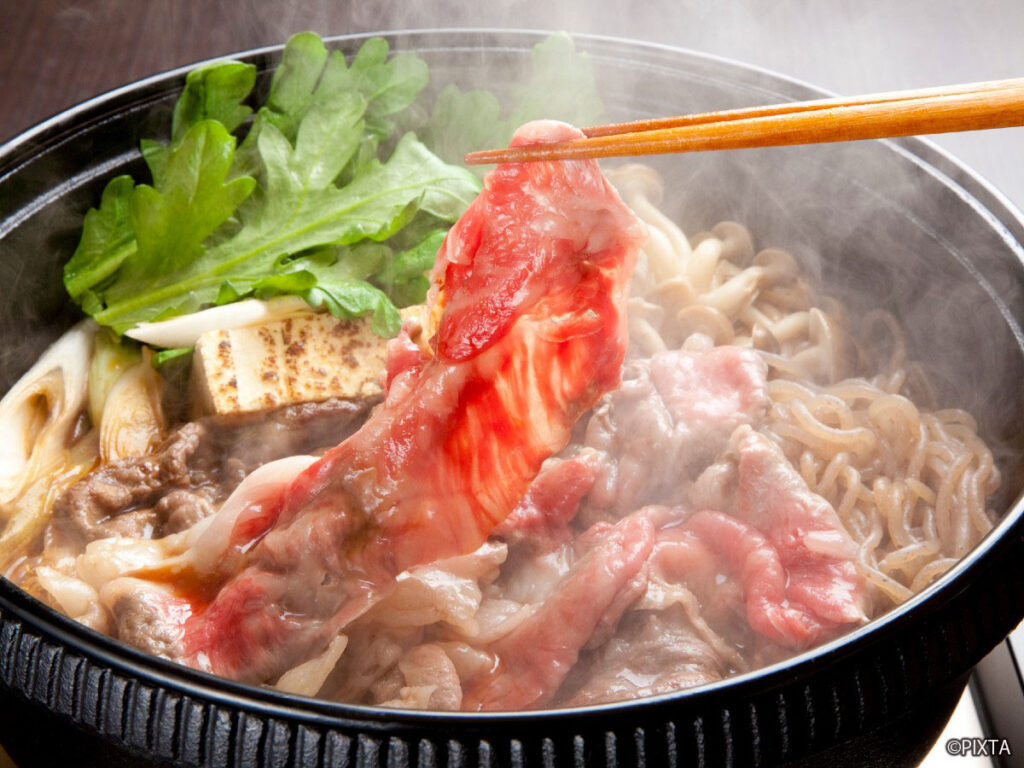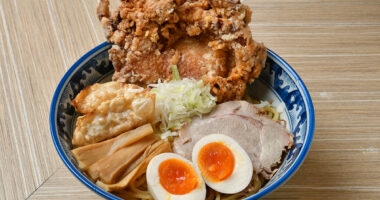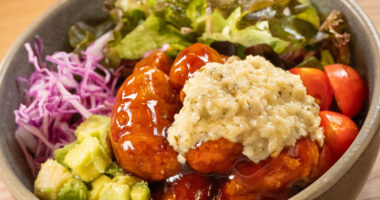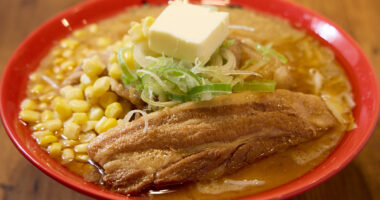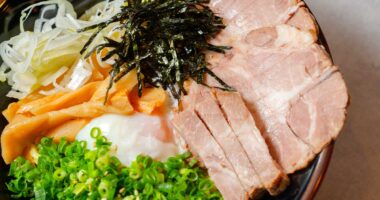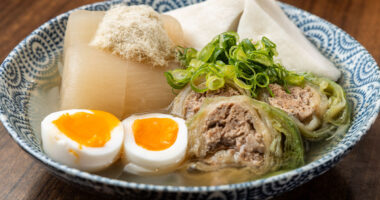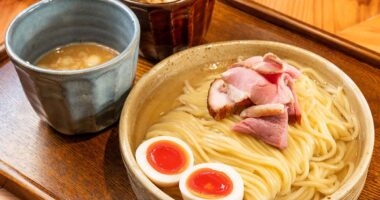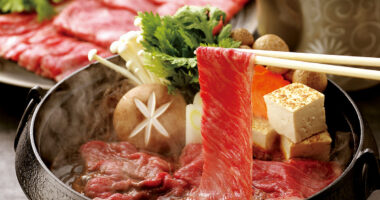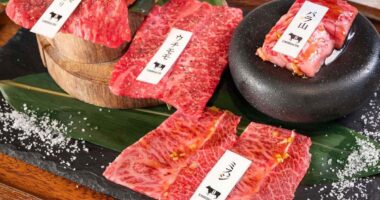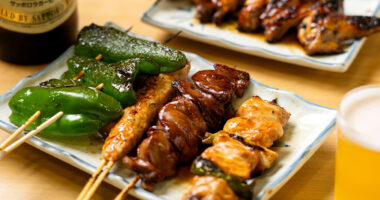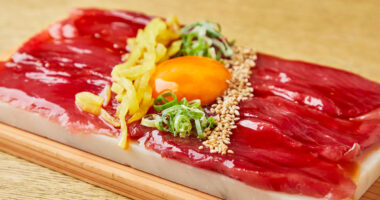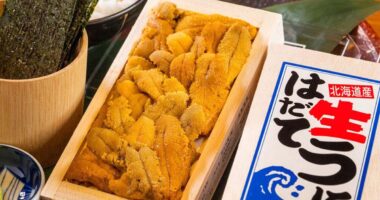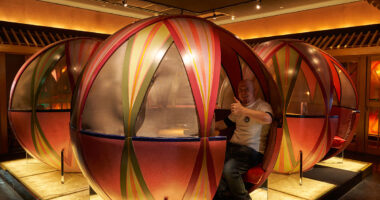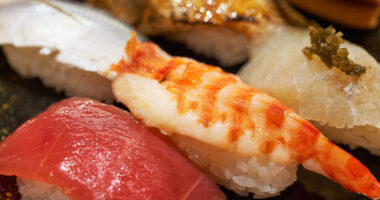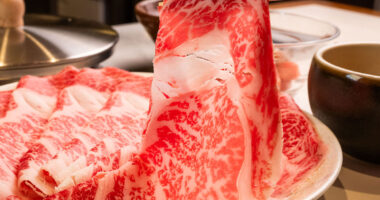すき焼き Sukiyaki and しゃぶしゃぶ shabu-shabu are two different dishes, but they both are a great way to experience the piping hot and delicious appeal of traditional Japanese hot pot cooking.
What are sukiyaki and shabu-shabu?
Sukiyaki and shabu-shabu are two types of Japanese hot pot cooking.
Sukiyaki is a Japanese hot pot dish usually made with thinly sliced beef cooked with vegetables, tofu, and noodles in a sweet and savory soy sauce, sugar, and mirin-based broth. The beef is sometimes dipped in raw egg after it’s cooked to your taste. While that may seem a bit scary for those from other countries where eating raw egg is considered unsafe, don’t worry! Raw eggs in Japan are prepared to be eaten safely, and are often enjoyed with sukiyaki.
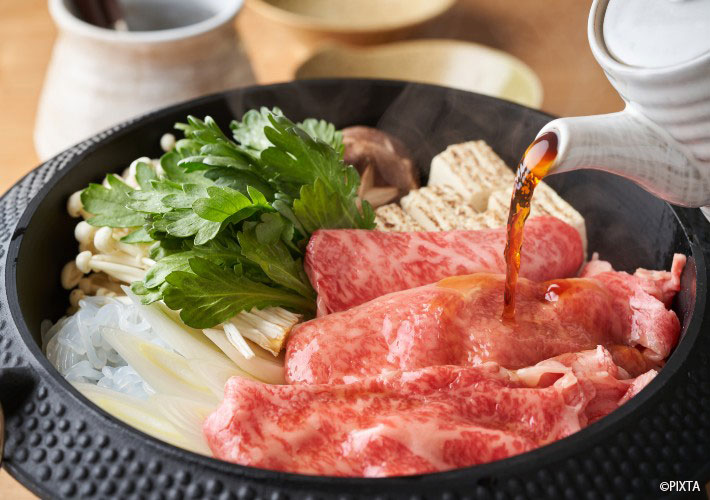
Sukiyaki, where the ingredients simmer and cook to your liking in a hot pot.
Shabu-shabu uses very similar ingredients, but differs in that the beef and vegetables are cooked by swishing them through piping hot dashi broth, and is usually less sweet than sukiyaki. The name “shabu-shabu” comes from the sound of the ingredients being swished around in the hot broth! The meat and vegetables are then usually dipped in accompanying sauces like sesame and ponzu.

Shabu-shabu, which is cooked by swishing the ingredients through the broth.
Where to get sukiyaki and shabu-shabu
Sukiyaki and shabu-shabu are very popular, so you can find them all across Japan in various types of restaurants. At high-end specialty restaurants, customers can expect to spend between 3,000 to 10,000 yen. Both dishes are commonly available at chain izakaya restaurants, with an affordable cost range of 1,000 to 2,000 yen, and are sometimes even available in miniature one-person-sized sets at a lesser price.
Types of sukiyaki and shabu-shabu
While types of hot pot vary by region, common ingredients to cook sukiyaki beef with are tofu, scallion, Chinese cabbage, and Japanese mushrooms like shiitake. Shabu-shabu’s main ingredients are mostly beef and pork, but seafood like yellowtail, amberjack, and sea bream is also popular. Some rare variations even include crab! You can also try a version of shabu-shabu called 冷しゃぶ rei-shabu, which is cooked shabu meat sold cold, usually in a salad, which is available at convenience stores and supermarkets for around 300-400 yen.
Sukiyaki beef dipped in raw egg.
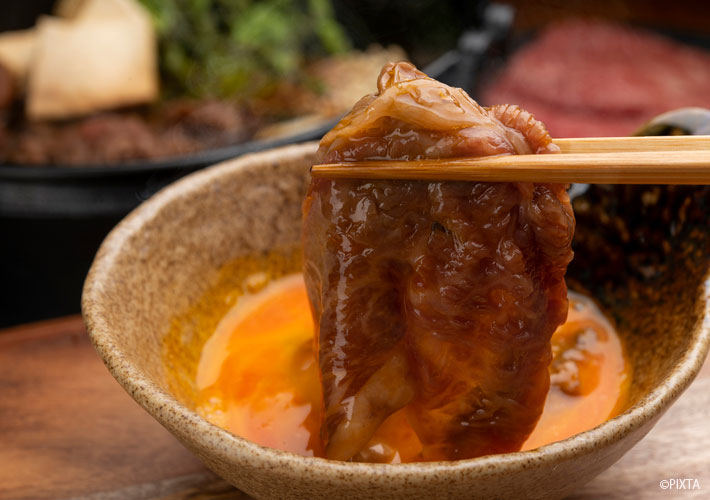
Sukiyaki being dipped in raw egg.
冷しゃぶ Rei shabu: a type of cooked shabu-shabu meat served cold, usually as a salad.
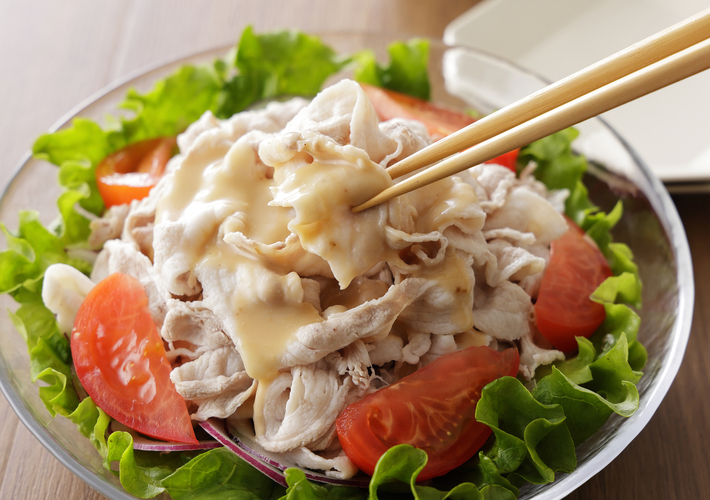
A refreshing serving of rei shabu in a salad
Tips for enjoying sukiyaki and shabu-shabu
For shabu-shabu, first, you’ll usually be served a dipping sauce, such as ponzu or sesame sauce, alongside your shabu-shabu. Pour a small amount of the sauce into a small bowl. Once the broth in the pot is simmering on the table, use your chopsticks to add slices of meat or veggies to the pot. Swirl them around in the broth for a few seconds until it’s cooked to your liking. Remove the cooked meat or vegetable from the pot with your chopsticks and dip it into your preferred sauce, then dig in!

It won’t take long to cook your shabu-shabu to your liking!
Sukiyaki is enjoyed in a similar but slightly different way. Rather than swirl your beef and veggies through the hot water, you typically let them sit and simmer on their own. You then take the cooked beef from the pot with your chopsticks and dip it into the raw egg, if desired. Do the same with veggies and matching sauces, and continue to add ingredients to the pot as you eat to get even more flavor out of your sukiyaki.
While there are sukiyaki and shabu-shabu meal sets sized for one person available in Japan, the dish is viewed as a communal food, so it’s very fun to eat with a group of friends. Try using different sauces with different ingredients for shabu-shabu, and experiment with cooking the meat just the way you like it. A popular way to finish either meal is to make rice porridge by pouring rice into the hot pot and mixing it with the leftover broth. Try that and eat like a local!
